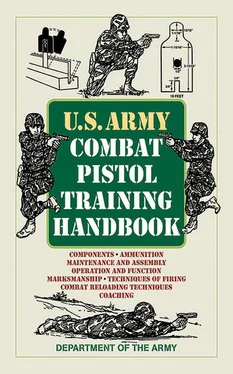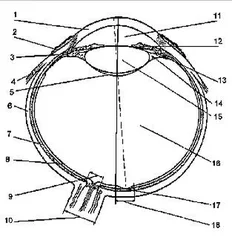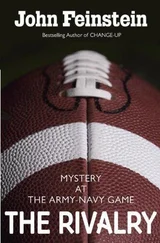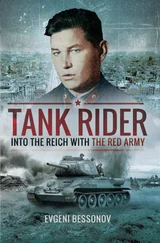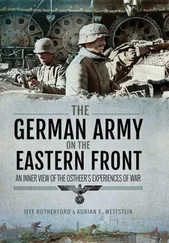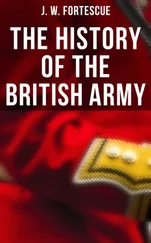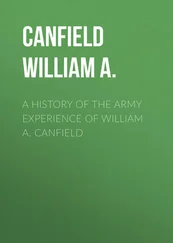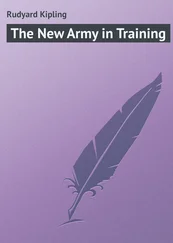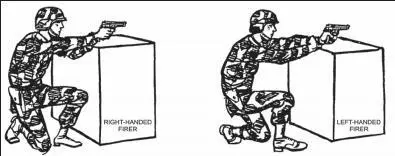
Figure 2-14. Kneeling supported.
SECTION II. COMBAT MARKSMANSHIP
After a soldier becomes proficient in the fundamentals of marksmanship, he progresses to advanced techniques of combat marksmanship. The main use of the pistol is to engage the enemy at close range with quick, accurate fire. In shooting encounters, it is not the first round fired that wins the engagement, but the first accurately fired round. The soldier should use his sights when engaging the enemy unless this would place the weapon within arm’s reach of the enemy.
2-7. Techniques of Firing
Firing techniques include the use of hand-and-eye coordination, flash sight picture, quick-fire point shooting, and quick-fire sighting.
a. Hand-and-Eye Coordination. Hand-and-eye coordination is not a natural, instinctive ability for all soldiers. It is usually a learned skill obtained by practicing the use of a flash sight picture (see paragraph b below). The more a soldier practices raising the weapon to eye level and obtaining a flash sight picture, the more natural the relationship between soldier, sights, and target becomes. Eventually, proficiency elevates to a point so that the soldier can accurately engage targets in the dark. Each soldier must be aware of this trait and learn how to use it best. Poorly coordinated soldiers can achieve proficiency through close supervision from their trainers. Everyone has the ability to point at an object. Since pointing the forefinger at an object and extending the weapon toward a target are much the same, the combination of the two are natural. Making the soldier aware of this ability and teaching him how to apply it results in success when engaging enemy targets in combat.
(1) The eyes focus instinctively on the center of any object observed. After the object is sighted, the firer aligns his sights on the center of mass, focuses on the front sight, and applies proper trigger squeeze. Most crippling or killing hits result from maintaining the focus on the center of mass. The eyes must remain fixed on some part of the target throughout firing.
(2) When a soldier points, he instinctively points at the feature on the object on which his eyes are focused. An impulse from the brain causes the arm and hand to stop when the finger reaches the proper position. When the eyes are shifted to a new object or feature, the finger, hand, and arm also shift to this point. It is this inherent trait that can be used by the soldier to engage targets rapidly and accurately. This instinct is called hand-and-eye coordination.
b. Flash Sight Picture. Usually, when engaging an enemy at pistol range, the firer has little time to ensure a correct sight picture. The quick-kill (or natural point of aim) method does not always ensure a first-round hit. A compromise between a correct sight picture and the quick-kill method is known as a flash sight picture. As the soldier raises the weapon to eye level, his point of focus switches from the enemy to the front sight, ensuring that the front and rear sights are in proper alignment left and right, but not necessarily up and down. Pressure is applied to the trigger as the front sight is being acquired, and the hammer falls as the flash sight picture is confirmed. Initially, this method should be practiced slowly, with speed gained as proficiency increases.
c. Quick-Fire Point Shooting. This is for engaging an enemy at less than 5 yards and is also useful for night firing. Using a two-hand grip, the firer brings the weapon up close to the body until it reaches chin level. He then thrusts it forward until both arms are straight. The arms and body form a triangle, which can be aimed as a unit. In thrusting the weapon forward, the firer can imagine that there is a box between him and the enemy, and he is thrusting the weapon into the box. The trigger is smoothly squeezed to the rear as the elbows straighten.
d. Quick-Fire Sighting. This technique is for engaging an enemy at 5 to 10 yards away and only when there is no time available to get a full picture. The firing position is the same as for quick-fire point shooting. The sights are aligned left and right to save time, but not up and down. The firer must determine in practice what the sight picture will look like and where the front sight must be aimed to hit the enemy in the chest.
In close combat, there is seldom time to precisely apply all of the fundamentals of marksmanship. When a soldier fires a round at the enemy, he often does not know if he hits his target. Therefore, two rounds should be fired at the target. This is called controlled pairs. If the enemy continues to attack, two more shots should be placed in the pelvic area to break the body’s support structure, causing the enemy to fall.
In close combat, the enemy may be attacking from all sides. The soldier may not have time to constantly change his position to adapt to new situations. The purpose of the crouching or kneeling 360-degree traverse is to fire in any direction without moving the feet.
a. Crouching 360-Degree Traverse. The following instructions are for a right-handed firer. The two-hand grip is used at all times except for over the right shoulder. The firer remains in the crouch position with feet almost parallel to each other. Turning will be natural on the balls of the feet.
(1) Over the Left Shoulder (Figure 2-15): The upper body is turned to the left, the weapon points to the left rear with the elbows of both arms bent. The left elbow is naturally bent more than the right elbow.
(2) Traversing to the Left (Figure 2-16): The upper body turns to the right, and the right firing arm straightens out. The left arm is slightly bent.
(3) Traversing to the Front (Figure 2-17): The upper body turns to the front as the left arm straightens out. Both arms are straight forward.
(4) Traversing to the Right (Figure 2-18): The upper body turns to the right as both elbows bend. The right elbow is naturally bent more than the left.
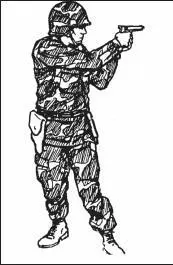
Figure 2-15. Traversing over the left shoulder.
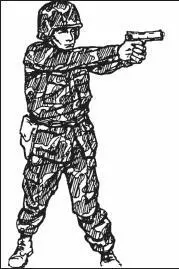
Figure 2-16. Traversing to the left.
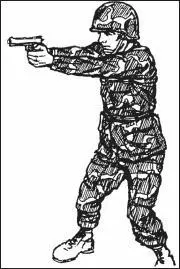
Figure 2-17. Traversing to the front.
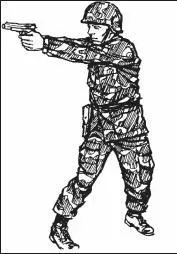
Figure 2-18. Traversing to the right.
(5) Traversing to the Right Rear (Figure 2-19): The upper body continues to turn to the right until it reaches a point where it cannot go further comfortably. Eventually the left hand must be released from the fist grip, and the firer will be shooting to the right rear with the right hand.
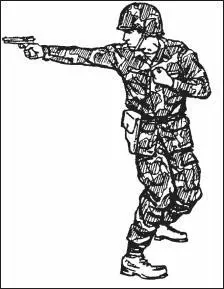
Figure 2-19. Traversing to the right rear.
b. Kneeling 360-Degree Traverse. The following instructions are for right-handed firers. The hands are in a two-hand grip at all times. The unsupported kneeling position is used. The rear foot must be positioned to the left of the front foot.
Читать дальше
